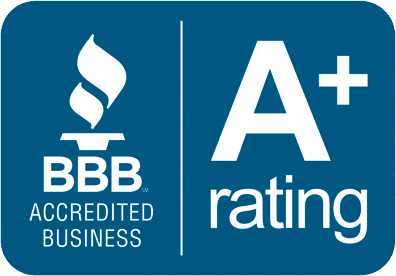3 Catalysts That Could Push Gold Prices Even Higher
Navigating the Golden Surge: Unveiling the 2024 Gold Market Catalysts
Embark on a journey through the ever-evolving landscape of the gold market with Newmont Capital. Our latest article delves into the three pivotal catalysts set to potentially drive gold prices to unprecedented levels in 2024. From the intricate dance of global demand to the influential policies of the Federal Reserve, and the intriguing January Effect - we cover it all.
Download our Wealth Protection Kit Now

1. The Demand Factor
The escalation in global demand for gold stands as a significant driver potentially propelling its prices to new heights. The World Gold Council has noted a remarkable increase in gold acquisitions, not just among individual investors but also central banks, signaling a widespread shift towards this precious metal. This uptick is particularly pronounced in nations like China and India, which have historically been major players in the gold market. Their cultural affinity for gold, especially during significant events such as the Chinese New Year, plays a crucial role in maintaining high demand levels. During these times, gold is not only purchased as an investment but also as gifts and for traditional ceremonies, further fueling its market demand.
Moreover, in times of geopolitical instability and economic uncertainty, gold's status as a safe haven asset is magnified. Investors often turn to gold as a hedge against volatility in other markets, seeing it as a more secure and stable store of value. This behavior is especially prevalent during periods of heightened geopolitical tensions or economic downturns, as gold is perceived to retain its worth better than other assets. Thus, as the global political and economic landscape faces uncertainty, whether due to regional conflicts, trade disputes, or fluctuations in the global economy, the allure of gold as a protective investment grows stronger.
This combined surge in both cultural and protective buying underpins the increasing demand for gold, potentially contributing to a continued rise in its prices. The convergence of traditional demand from gold-centric cultures and the strategic shift of investors seeking a safe haven in tumultuous times presents a compelling narrative for the sustained interest and investment in gold. This trend underscores the metal's enduring appeal and suggests a robust outlook for its market performance.
Download our Wealth Protection Kit Now

2. The Fed Factor
The influence of the Federal Reserve's policies on the gold market cannot be overstated. As the central banking system of the United States, the Federal Reserve, under the guidance of Jerome Powell, holds considerable sway over the nation's monetary policy, which in turn significantly impacts the gold market. One of the primary tools at the Fed's disposal is the manipulation of interest rates, a mechanism that is closely watched by investors and analysts alike.
In periods of rising inflation, which the economy is currently experiencing, the Federal Reserve often faces the challenge of balancing economic growth with the need to curb escalating prices. If the Fed adopts a dovish stance, opting to keep interest rates low to encourage borrowing and spending, this could lead to a weaker U.S. dollar. A depreciating dollar is a key factor in boosting the appeal of gold as an investment. Gold is globally priced in dollars, so when the value of the dollar falls, gold becomes cheaper for investors holding other currencies, which can increase demand and, consequently, the price of gold.
Investors seeking to capitalize on these market shifts must have a nuanced understanding of the Federal Reserve's policy decisions and their broader economic implications. Monitoring statements and policy changes from the Fed can provide valuable insights into future gold price movements. For instance, signals of a potential rate hike or cut can cause immediate reactions in the gold market, as investors adjust their positions in anticipation of these changes.
Download our Wealth Protection Kit Now

3. The January Effect
The 'January Effect' in the gold market is a fascinating phenomenon that has captured the attention of investors and market analysts alike. This pattern, which has been observed over several years, suggests that gold prices often experience an uptick in January. The reasons behind this trend are multifaceted and offer a window into the complex interplay of market forces.
One of the primary drivers behind the January Effect is renewed investor interest. As the new year begins, investors often reassess their portfolios, setting new investment goals and strategies. Gold, with its reputation as a stable and reliable asset, attracts attention as investors look to diversify their holdings and hedge against potential volatility in other markets. This increased demand for gold can lead to a rise in its price.
Portfolio rebalancing is another critical factor contributing to this phenomenon. At the start of the year, many investors and institutional fund managers reevaluate their asset allocations to ensure alignment with their risk tolerance and investment objectives. Given gold's role as a counterbalance to stocks and bonds, it often becomes a more significant component of portfolios during this rebalancing process. This heightened demand from both individual and institutional investors can further drive up gold prices.
It's important to note, however, that while the January Effect is a recognized pattern, it is not a guaranteed occurrence. Like all market trends, it is subject to the influence of broader economic conditions, geopolitical events, and central bank policies. Thus, while it can serve as a useful indicator for investors, it should be considered within the broader context of the gold market's dynamics and the global economic environment.
Download our Wealth Protection Kit
Now
Highlights Table
| Catalyst | Description | Impact on Gold Prices |
|---|---|---|
| The Demand Factor | Increased global and cultural demand, especially in markets like China and India. | Potentially leads to higher prices due to increased buying and hoarding of gold. |
| The Fed Factor | Federal Reserve's policies on interest rates under the leadership of Jerome Powell, particularly in response to inflation. | A dovish Fed policy could weaken the dollar and make gold a more attractive investment, driving up prices. |
| The January Effect | A historical pattern where gold prices tend to rise in January. | Potential for an early-year price increase, though not guaranteed, due to seasonal investor behavior and market trends. |
Final Thoughts
While predicting the future of gold prices with certainty is impossible, being aware of these key catalysts – demand dynamics, Federal Reserve policies, and seasonal trends – can offer valuable insights. As always, it's important to approach gold investing with a balanced perspective, considering both the opportunities and risks involved.
Newmont Capital remains dedicated to providing you with the latest insights and trends in the gold market, helping you make informed investment decisions.
Remember, investing in gold or other precious metals should be based on thorough research and a clear understanding of your financial goals and risk tolerance. Newmont Capital is here to guide you through every step of your investment journey.
Download our Wealth Protection Kit Now

FAQ's
-
What influences the price of gold the most?
The price of gold is influenced by a variety of factors, including global economic conditions, inflation, central bank policies, and geopolitical tensions. Demand for gold, particularly from large markets like China and India, also plays a significant role. Understanding these factors can help investors make more informed decisions.
-
Is gold a good investment during times of high inflation?
Gold is often considered a hedge against inflation. During times of high inflation, the value of currency can decrease, but gold often retains its value or even increases in price. Therefore, many investors turn to gold as a way to protect their wealth during inflationary periods.
-
How can I start investing in gold?
To begin investing in gold, you should first conduct thorough research and understand your financial goals and risk tolerance. You can invest in gold through various means, including buying physical gold, gold ETFs (Exchange-Traded Funds), gold stocks, or Gold IRAs. Consulting with a financial advisor or a specialist firm like Newmont Capital can provide you with tailored advice and help you make informed decisions.
Contact Info
Corporate Headquarters:
12100 Wilshire Blvd, Suite 800
Los Angeles, CA 90025
Wyoming Office:
2232 Dell Range Blvd, Suite 284
Cheyenne, WY 82009
©2024 Newmont Capital Group, LLC. All rights reserved. Opinions on this website are not indicative of future performance. Precious metals carry risks and may vary in value. Newmont Capital Group does not guarantee profit from metal investments. Purchasing or selling decisions, based on personal research and judgment, are solely the customer's responsibility. Newmont Capital Group does not offer investment, legal, retirement, or tax advice; individuals should consult respective professionals.
Terms and Conditions · Privacy Policy · AML/Compliance and Supervisory Procedures · ADA Compliance · Risk Disclosures · Shipping and Transaction Agreement



